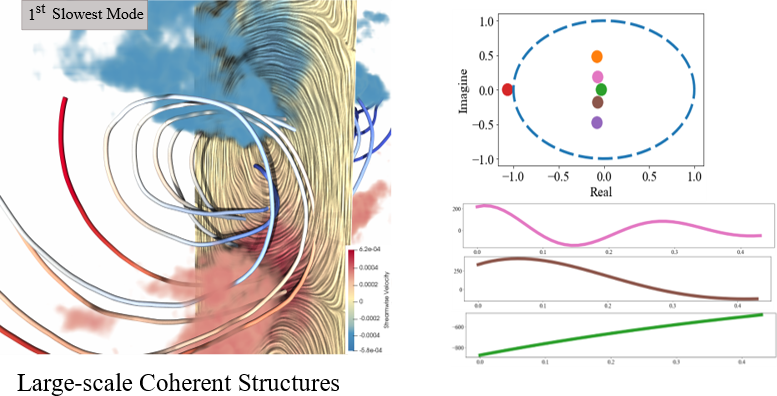Dynamic Mode Decomposition for Large-Scale Coherent Structure Extraction in Shear Flows
Duong Nguyen, Panruo Wu, Rodolfo Ostilla Monico, Guoning Chen
View presentation:2022-10-21T14:24:00ZGMT-0600Change your timezone on the schedule page
2022-10-21T14:24:00Z

Prerecorded Talk
The live footage of the talk, including the Q&A, can be viewed on the session page, Spatial Data.
Fast forward
Keywords
Flow visualization, Shear Flows, Dynamic Mode Decomposition
Abstract
Large-scale structures have been observed in many shear flows which are the fluid generated between two surfaces moving with different velocity. A better understanding of the physics of the structures (especially large-scale structures) in shear flows will help explain a diverse range of physical phenomena and improve our capability of modeling more complex turbulence flows. Many efforts have been made in order to capture such structures; however, conventional methods have their limitations, such as arbitrariness in parameter choice or specificity to certain setups. To address this challenge, we propose to use Multi-Resolution Dynamic Mode Decomposition (mrDMD), for large-scale structure extraction in shear flows. In particular, we show that the slow-motion DMD modes are able to reveal large-scale structures in shear flows that also have slow dynamics. In most cases, we find that the slowest DMD mode and its reconstructed flow can sufficiently capture the large-scale dynamics in the shear flows, which leads to a parameter-free strategy for large-scale structure extraction. Effective visualization of the large-scale structures can then be produced with the aid of the slowest DMD mode. To speed up the computation of mrDMD, we provide a fast GPU-based implementation. We also apply our method to some non-shear flows that need not behave quasi-linearly to demonstrate the limitation of our strategy of using the slowest DMD mode. For non-shear flows, we show that multiple modes from different levels of mrDMD may be needed to sufficiently characterize the flow behavior.